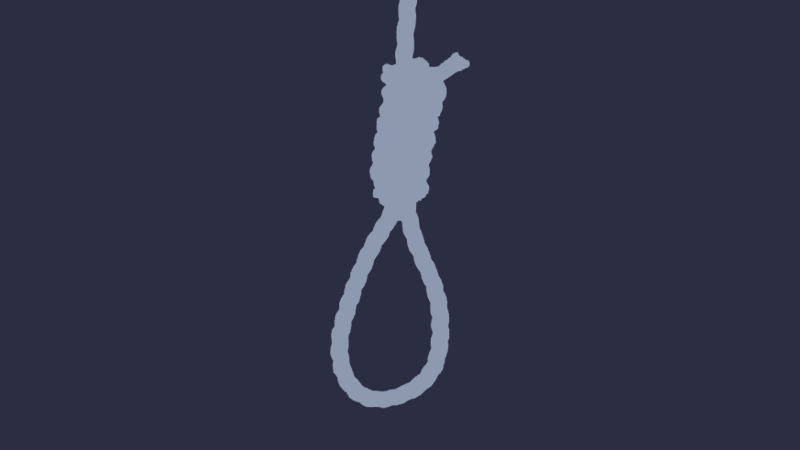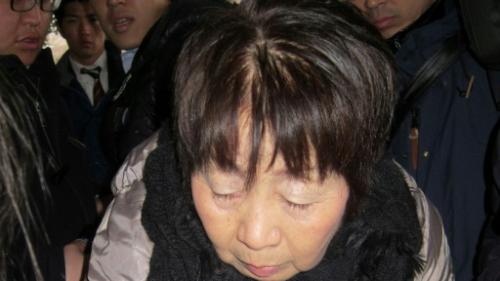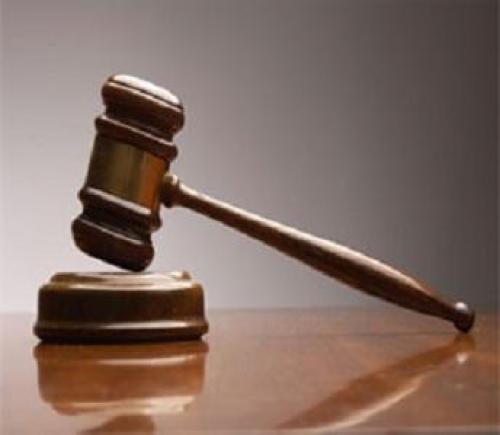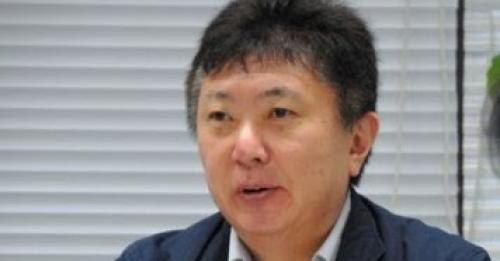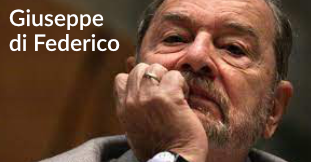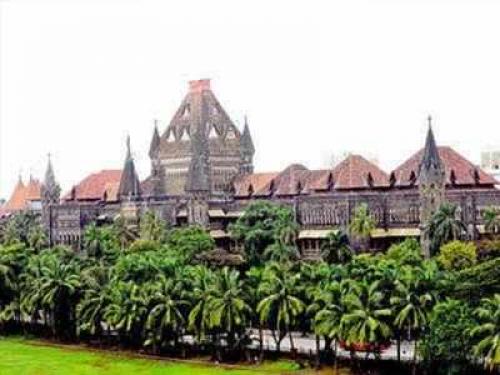situation:The death penalty in Japan is provided for 13 crimes, but, in practice, is applied only to homicide cases. Death is by hanging: the detainee, hooded and tied, is placed over a trap-door which gives way without warning. From November 1989 to March 1993 there had been a de facto moratorium on executions, in part due to personal opposition to the death penalty by the then Minister of Justice acting. Since the mid-90s there has been a resurgence of the death penalty that continued to accelerate in the 2000’s.
In 2018, Japan executed 15 people, a record of the last decade.
As of July 2018, according the Minister of Justice, death row inmates are 116, a drop from 123 of December 2017.
Japan had a de facto moratorium on executions from October 2005 to September 2006 because the then-justice minister, Seiken Sugiura, said the death penalty went against his Buddhist beliefs. Then, 4 executions were recorded in 2006, 9 in 2007, 15 in 2008, 7 in 2009.
Minister of Justice, Keiko Chiba ordered and personally witnessed two hangings in July 2010 despite her opposition to capital punishment. In 2011, for the first time in nearly 20 years, no prisoner was put to death in Japan. Then Minister Toshio Ogawa, sent three inmates to the gallows in March 2012. He also scrapped an internal study panel in March 2012 and also cancelled plans to set up a broader discussion panel on the issue, arguing the pros and cons had been discussed sufficiently and that the ultimate decision should be left up to the public, of which the overwhelming majority supported the death sentence. Minister Makoto Taki sent four prisoners to gallows.
On 26 December 2012, Shinzo Abe was elected as Prime Minister by the Diet, following the Liberal Democratic Party's landslide victory in the 2012 general elections. New Justice Minister Sadakazu Tanigaki has expressed a positive stance toward executions. "The death penalty system has adequate grounds and I will perform my duties under relevant laws," he told a news conference. In 2012 executions were 7, in 2013 8 and in 2014 3 as in 2015 and 2016.
Since the Liberal Democratic Party regained the reins of government in December 2012, the average period between the finalisation of the death sentence and the implementation of the punishment has shrunk to less than half of the average span of the previous 10 years. According to the Justice Ministry, the average period between definitive sentences and executions stood at about five years and seven months for death row inmates whose capital punishments were implemented from 2003 to 2012.
When defending Japan’s use of the death penalty, the Government always cites overwhelming public support for the policy.
In the latest poll, conducted on 3,000 adults under an interview format from 13 to 23 November 2014, 80.3 percent of respondents considered the death penalty a “permissible” sanction, and just 9.7 percent of them felt it should be abolished. Those who replied, “I don’t know” or “I cannot reply yes or no” constituted 9.9%. When asked to cite their reasons, and with multiple answers allowed, 53.4 percent of those who deemed capital punishment permissible said the victims’ anger could never ease if the system was abolished and offenders were allowed to live. Another 52.9 percent replied that perpetrators of heinous crimes should pay with their life. Among those opposed to the death penalty, 46.6 percent cited potential miscarriages of justice and 41.6 percent said offenders should be kept alive to atone for their crimes. Respondents in the latest poll were for the first time asked whether they would support the abolition of capital punishment if Japan introduced a sentence of life imprisonment without parole. The rate of those in favour came to 51.5 percent, against 37.7 percent who still wished to retain the death penalty.
In the previous survey conducted by the Cabinet Office in December 2009, 85.6 per cent said “the death penalty is unavoidable under certain circumstances,” while 5.7 per cent said “the death penalty should be abolished in all circumstances” and 8.6 per cent said they “do not know.” The proportion of respondents in favour of the death penalty stood at 81.4 percent in the 2004 poll. The poll cited heinous crimes and the fear of rising crime after the abolition of capital punishment among key factors.
According to an information science expert, the government inflates support for the death penalty in its opinion surveys and a significant portion of those who favor capital punishment also say they would support abolishing it in the future. "It has been reported that more than 80 percent (of Japanese) approve the death penalty, but seen from an informatics perspective, it is unreasonable to make such a generalization," Fumiyasu Yamada, a professor of information science at Shizuoka University, said on 27 November 2012. In the December 2009 survey, Yamada noted that 34.2 percent of those who said capital punishment is "unavoidable" also said in the same survey that the death penalty "may be abolished if circumstances change in the future." Given this figure, it is "natural to see that those who want the death penalty to be upheld comprise 50 percent, and those who want its elimination or a move toward elimination form slightly more than 30 percent," he said. Yamada also criticized one of the choices in the survey, that the death penalty "should be abolished in all circumstances," saying such an expression is "too strong" and thus "makes it hard for people to choose it." Posing such a question is "biased," he said. Yamada also said the survey isn't representative of the entire nation as questionnaires were collected only from about two-thirds of the people sampled.
Besides, a November 2013 study shows “serious flaws” in Tokyo’s assertion that the death penalty is universally popular and should therefore be maintained. Mai Sato, from Oxford University’s Centre for Criminology, shows that views are much less entrenched than previously thought, particularly after people have been exposed to more information on the subject. One of Sato’s main contentions is that questions used in Government public opinion surveys are phrased in a way that results in an exaggerated level of support for the death penalty. Sato decided to conduct her own survey of around 20,000 people in Japan and gave respondents five options regarding the death penalty: should definitely be kept (44 percent), should probably be kept (36 percent), cannot say (16 percent), should probably be abolished (3 percent) and should definitely be abolished (1 percent). She argues the results show that rather than being overwhelmingly in favour, just over half of the Japanese public is either “undecided” or “lukewarm” toward the death penalty. Sato then decided to take 1,000 people from the survey and split them into two groups, each of whom had an equal proportion of those in the pro, anti and undecided camps. The first group was provided with several facts about the death penalty – such as the execution process and the possibility of miscarriages of justice – while the other received no additional information. The results said 36 percent supported retaining the death penalty in the first group versus 46 percent in the latter group. A final study saw a group of people deliberating the issue over a day. Findings showed views often fluctuated on the matter, while participants also became more tolerant of opposing views, said Sato. Rather than measure support for the death penalty, Sato thinks the Government should measure the level of tolerance toward abolition. She believes her research shows a majority of the Japanese public is likely to “accept or tolerate” abolition.
In October 2016, the Japan Federation of Bar Associations, for the first time, adopted a public statement calling for the abolishment of the death penalty by 2020, citing the possibility of wrongful convictions and international trends against capital punishment.
Yoko Kamikawa, who became Minister of Justice on 3 August 2017, said she would “act carefully and strictly as required by the law” regarding capital punishment, respecting the sentences handed down by courts. “The death penalty is an extremely serious punishment that ends a person’s life, and I feel we must approach its use with the most cautious of attitudes,” Kamikawa said at her first news conference after the appointment. “At the same time, this is a country ruled by laws, and we must rigorously carry out finalized court rulings. Death penalty rulings in particular are handed down by courts after careful deliberation to people who have committed heinous and grave crimes,” she said. Kamikawa previously served as justice minister in the Abe administration between 2014 and 2015, during which time she ordered the execution of another death-row inmate.
Death penalty top secret
The government maintained maximum secrecy concerning executions until December 2007. The government limited itself to reporting only the number of executions without revealing the names of the executed. Executions were usually held during the summer or at the end of the year, when the Diet, the Japanese parliament, was not in session, thus avoiding the possibility of debate.
With the new Minister of Justice, Kunio Hatoyama, an outspoken supporter of the death penalty who took office in August 2007, the principles and taboos that Japan maintained with regard to capital punishment were systematically broken down.
In December 2007, with the first execution of the Fukuda government, the Justice Minister broke with the tradition of not publicizing them and announced the names and crimes of the three convicts being executed. The tradition of not carrying out executions while the Diet is in session in an attempt to avoid unnecessary controversies was also broken.
On 27 August 2010, the Tokyo Detention House opened its execution chamber to the media, giving the public its first peek at the place where death-row inmates are hanged.
However, the use of the death penalty in Japan continued to be shrouded in secrecy.
From seven in the morning until seven at night death row inmates have to sit still in a small space. If they move, fall over or lie down, the guards immediately force them to sit up again. They only exercise twice a week, for 30 minutes. Cameras watch them 24 hours a day, while they eat, use the toilet, do anything. In December 2011, the Justice Ministry said nearly half of death row inmates are on full-time medication for mental stress. Inmates on death row have complained of psychological symptoms such as insomnia and hallucinations and have been continuously treated with drugs, The Yomiuri Shimbun reported. Such symptoms can occur because of confinement in closed spaces for a long period of time, and since some inmates have been detained for more than 30 years.
Typically, the accused is not informed of the date of their execution until the actual day of their hanging. Because prisoners are apprised of their execution only one hour beforehand, prisoners are unable to see family members or make final appeals. Family members and lawyers are generally notified after the execution, at which even lawyers are not allowed to be present.
The prison warden formally announces the execution in the anti-room to where the hanging takes place; it is here that prisoners are also allowed a final chance to speak with the chaplain. Inmates are then blindfolded, handcuffed in front and escorted to the execution chamber. A curtain is the only thing that separates the front and execution chambers, but it is usually closed, and inmates are unable to see the execution chamber and the rope dangling from the ceiling pulley and hooked to the floor. There was no rope visible in the execution chamber because “it is installed only when an execution is carried out,” officials said. In the execution chamber, the inmate’s legs are tied, the noose is tightened and the condemned stands on a trap door. The 30-minute tour showed the red square on the floor where a convict stands with a noose around their neck before the trapdoor opens beneath them. Then three officials enter a side room where there are three buttons. They push them at the same time so they don’t know which one actually springs the trapdoor. In the attendant chamber, officials view the execution chamber and the room below. In five minutes after a doctor confirms death, the corpse is lowered and put in a coffin.
In May 2013, when Japan was reviewed by the UN Committee Against Torture, the Committee expressed deep concern about many issues, including the conditions of detention of prisoners on death row, in particular with respect to the unnecessary secrecy and uncertainty surrounding the execution of prisoners; the use of solitary confinement for prisoners sentenced to death, some exceeding 30 years; and the lack of a mandatory appeal system for capital cases given that an increasing number of defendants were convicted and sentenced to death without exercising their right of appeal. The Committee further urged the Government of Japan to ensure that death row inmates can afford all the legal safeguards and protections they are entitled to, including by giving them and their family reasonable advance notice of the scheduled date and time of the execution and revising the rule of solitary confinement for death row inmates. The Committee urged the authorities to provide data on death row inmates, disaggregated by sex, age, ethnicity and offence and to consider the possibility of abolishing the death penalty.
In 2009, as a part of a larger judicial reform project, laws came into force to introduce citizen participation in certain criminal trials by introducing lay judges. Lay judges comprise the majority of the judicial panels of three professional judges and six ordinary citizens. They do not form a jury separate from the judges, like in a common law system, but participate in the trial as inquisitorial judges who actively analyse and investigate evidences presented from defence and prosecutor, in accordance with civil law tradition. In Japan, there is no special procedure for selecting citizens to serve as lay judges in potential capital trials. The lay judge system was introduced in Japan in May 2009 to reflect “common sense” in criminal trials, which have often been criticized for being difficult to comprehend and out of touch with popular sentiment.
Obtaining a judicial review or a commutation on appeal is a rare event in Japan. However, after 2009, with the introduction of courts composed of laymen judges, some cases of commutation on appeal have occurred.
As of 18 December 2015, a total of 26 death sentences have been handed down in lay judge trials. On 3 February 2015, the Supreme Court of Japan upheld two separate high court rulings that overturned death sentences handed down in lay judge trials to two men facing robbery-murder charges. The High Courts commuted the sentences of the two men to life in prison as they thought capital punishment was too heavy. The top court said a death sentence is “an ultimate punishment that takes the defendant’s life” and judges “need to carefully consider it and show concrete evidence” that the punishment cannot be helped. The top court added that there is a need to balance judgments between professional judges and ordinary citizens. The Tokyo and Chiba district courts sentenced the two men to death in 2011, in separate lay judge trials. But the rulings were overturned in 2013 by the Tokyo High Court, where the cases were examined only by professional judges.
The Japanese justice system continues to rely heavily on “confessions” obtained through torture or other ill-treatment. There are no clear limits on the length of interrogations, which are not fully recorded and which lawyers are not permitted to attend.
On 27 August 2010, the Tokyo Detention House opened its execution chamber to the media, giving the public its first peek at the place where death-row inmates are hanged. The Justice Ministry organized the tour at the instructions of Justice Minister Keiko Chiba, who was trying to generate public debate on the death penalty. Officials of the detention house and the ministry escorted some 20 reporters to the execution chamber, which is part of a larger structure consisting of a chaplain chamber, front chamber, button chamber and attendant chamber. Reporters were first briefed in a conference room and then loaded onto a small, curtained bus for the trip to the execution chamber. Reporters were banned from speaking and from bringing anything other than pen and notebook. In the chaplain chamber, inmates can receive services from a chaplain appointed by the detention house. The room has a Buddhist altar, but Christian and Shinto arrangements can also be made upon request. Tea, fruit or sweets are also offered in the room, he said. Then they are escorted to the front chamber, where they are given a last chance to speak with the chaplain. It is in the front chamber where the chief of the detention house formally announces the execution.
In May 2017, Japan was reviewed by the UN Committee Against Torture, the Committee asked Japan to provide information on the measures taken to ensure that the regime governing the detention of prisoners on death row does not amount to cruel, inhuman or degrading treatment or punishment, inter alia, by giving death row inmates and their families reasonable advance notice of the scheduled date and time of an execution and introducing a mandatory system of review in capital cases, with suspensive effect, following a conviction for a capital crime at first instance. Japan was requested to provide data on death row inmates, disaggregated by sex, age, ethnicity and offence (see CCPR/C/JPN/CO/6, para. 13) and to provide information on any efforts taken by the State party to consider ratifying the core United Nations human rights treaties, including the Second Optional Protocol to the International Covenant on Civil and Political Rights, aiming at the abolition of the death penalty.
The death penalty on women
The execution of a pregnant woman is suspended until after she has given birth according to art 479(2)-(3) of the Code of Criminal Procedure. One woman was sentenced to deaath in 2017.
United Nations
On 31 October 2012, Japan was reviewed under the Universal Periodic Review of the UN Human Rights Council. On 14 March 2013, Japan rejected the recommendation made by more than 20 States regarding the death penalty, including introducing a moratorium on executions with a view to full abolition. Takashi Okada, Deputy Permanent Representative of Japan to the United Nations Office at Geneva, said that Japan did not think that it would be appropriate to abolish the death penalty.
In November 2017, Japan was reviewed under the Universal Periodic Review of the UN Human Rights Council. Japan believes “that each sovereign country should be allowed to make decisions on the issue of the death penalty independently. Domestic public opinion, the existence of extremely vicious crimes and other factors made it inappropriate to abolish the death penalty. A moratorium was also inappropriate, since the final judgement must be executed impartially and thoroughly under the rule of law. Japan reported its progress in improving prison conditions, including medical care and heating and cooling, and indicated that inmates sentenced to death were treated in appropriate conditions. It rejected all the recommendations regarding the death penalty, including introducing a moratorium on executions with a view to full abolition.
When defending Japan’s use of the death penalty, the Government always cites overwhelming public support for the policy. In the latest poll, conducted in November 2014, 80.3 percent of respondents considered the death penalty a “permissible” sanction, and just 9.7 percent of them felt it should be abolished.
Arguments to reject recommendations (A/HRC/37/15/Add.1 ) are: “Japan's position on the issue of the death penalty is that this should be examined based on domestic public opinion. The majority of the Japanese people consider the death penalty to be unavoidable in the case of extremely heinous crimes and therefore Japan currently does not have any plans to establish a forum to discuss the death penalty system.
In Japan, the right to appeal is broadly recognized under the three-tier-trial system. Considering that many appeals have actually been made in death penalty cases and there is a problem to impose a burden of appealing on those who do not intend to appeal, Japan believes we should not introduce a system of mandatory appeal in cases where the death penalty has been handed down.
In Japan, a defendant has the right to appeal and the death penalty would not be carried out until the sentence becomes final and binding. We carefully take into account elements such as the absence of grounds for retrial, and only if these conditions are met, the order for execution will be placed. If we introduce a system of guaranteeing the suspension of the sentence for retrial, it will be inappropriate because as long as the inmate sentenced to death repeats the action for retrial, we will never be able to execute the sentence.”
On 29 September 2017, Japan voted against the Resolution on the Death Penalty at the 36° session of the UN Council on Human Rights.
On 19 December 2018, Japan voted against the Resolution on a Moratorium on the Use of the Death Penalty at the UN General Assembly.


